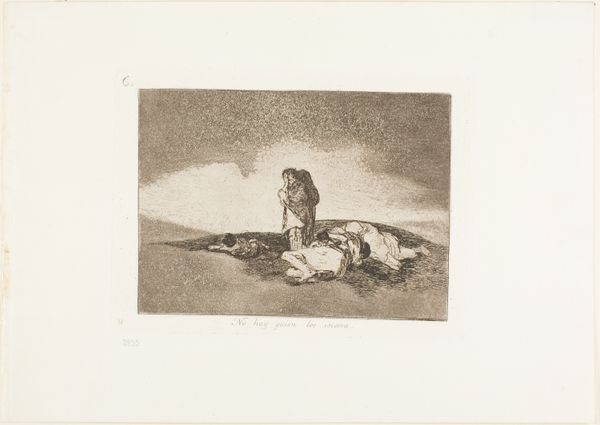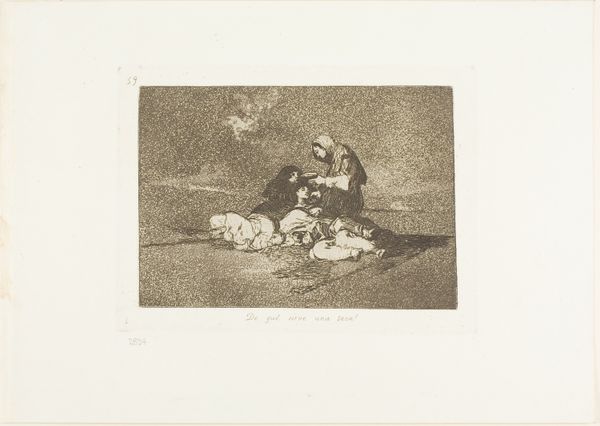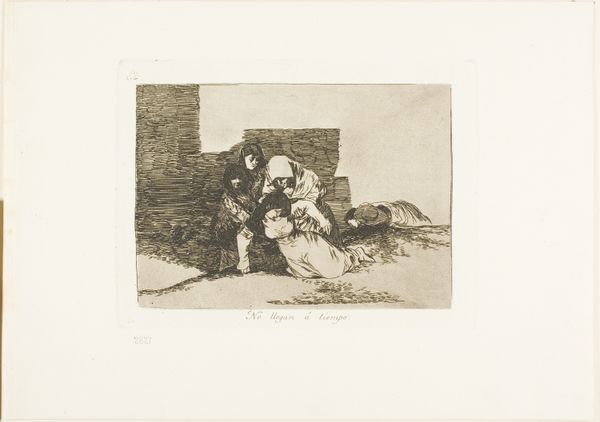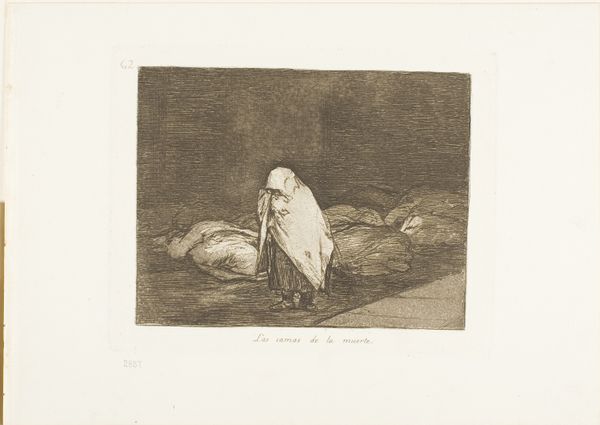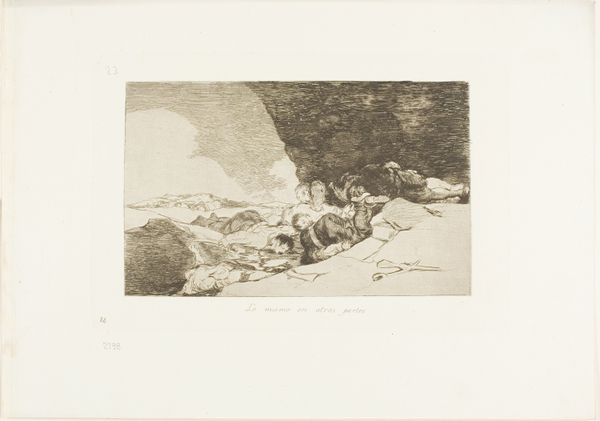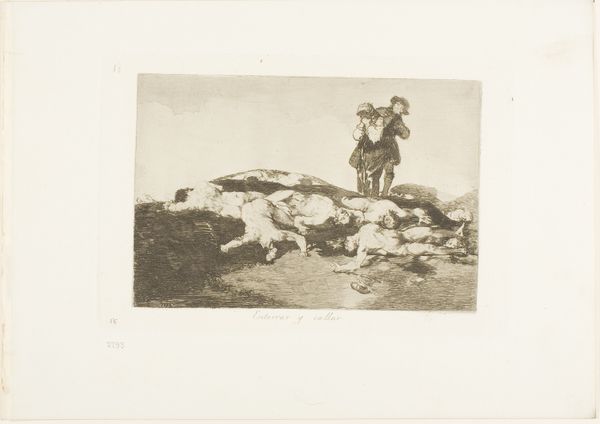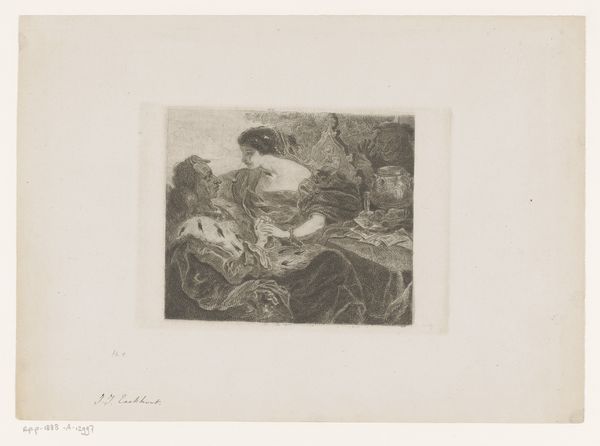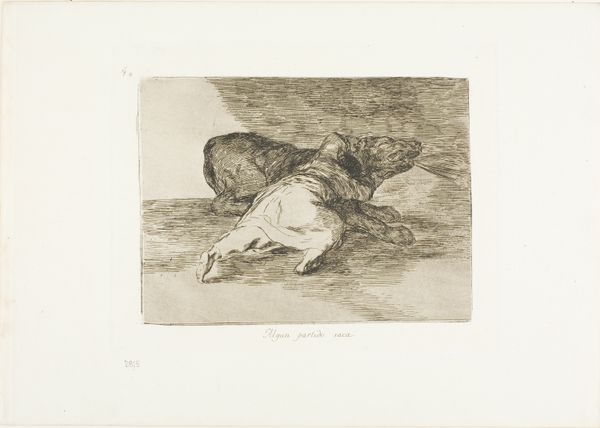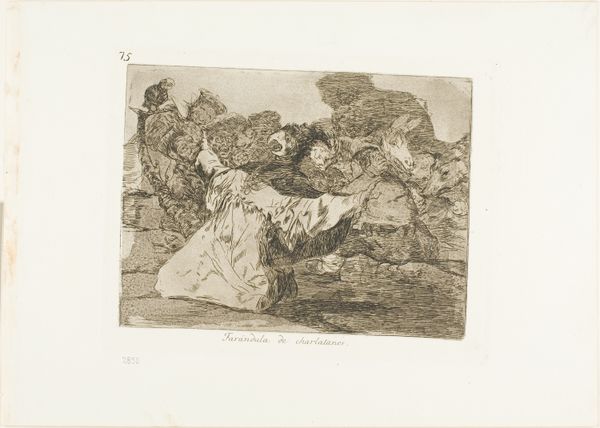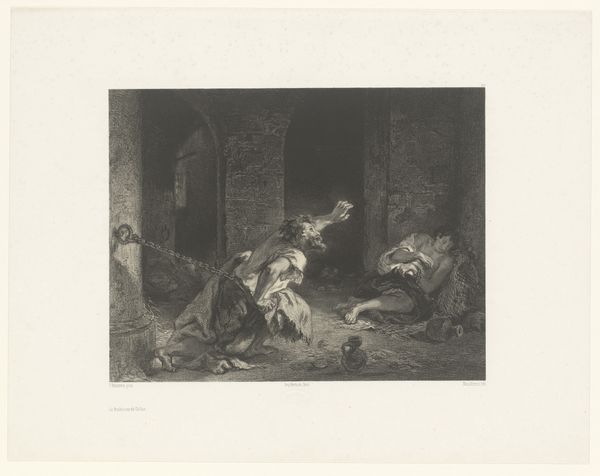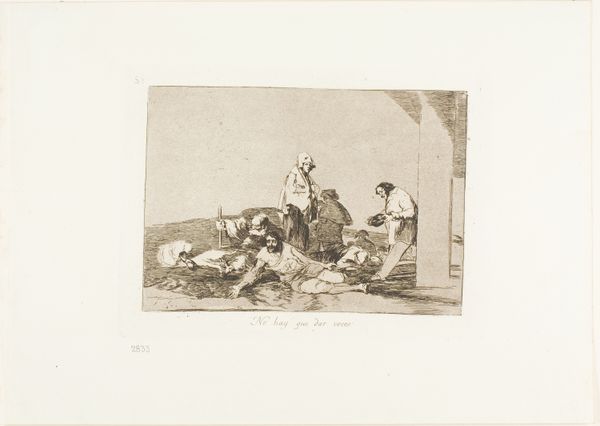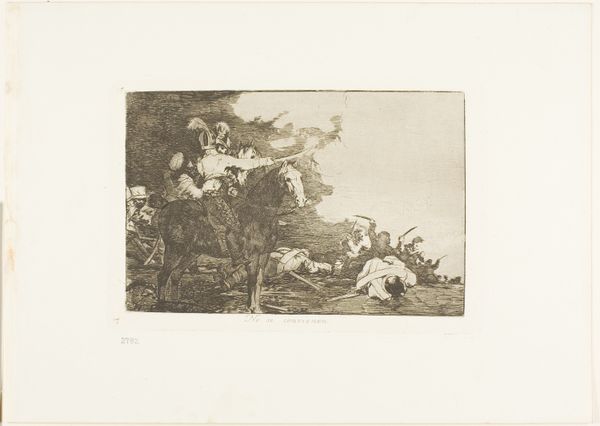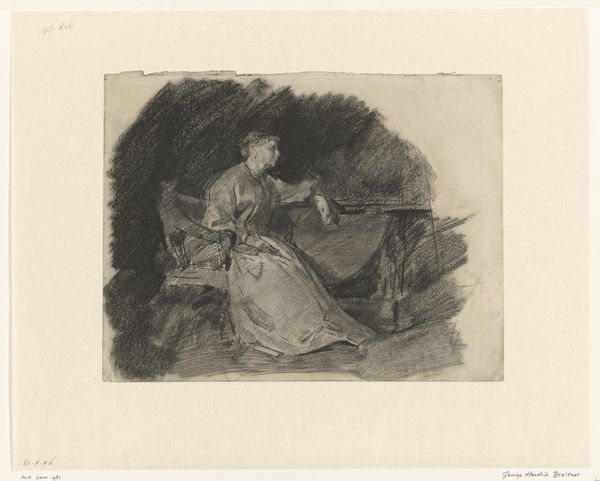
Cruel tale of woe!, plate 48 from The Disasters of War Possibly 1812 - 1863
0:00
0:00
drawing, print, etching, paper
#
drawing
#
narrative-art
# print
#
etching
#
war
#
figuration
#
paper
#
romanticism
#
history-painting
Dimensions: 131 × 182 mm (image); 153 × 205 mm (plate); 240 × 340 mm (sheet)
Copyright: Public Domain
Editor: This is Francisco Goya's etching, "Cruel tale of woe!," plate 48 from "The Disasters of War," likely created between 1812 and 1863. It's incredibly stark. I’m struck by the somber mood and the implied narrative. What do you see in this piece? Curator: I see a powerful indictment of war's impact on civilians, viewed through the lens of Romanticism’s preoccupation with emotion and injustice. Think about the historical context: Spain was ravaged by the Peninsular War. Goya wasn't just depicting events; he was critiquing power structures and challenging viewers to confront uncomfortable truths. How does Goya use visual language to convey suffering and perhaps, even resilience? Editor: The figures are positioned in very different poses - some lie prone, seemingly dead, while others are upright but emaciated. I see some of the figures are looking up, almost seeking divine intervention. The sharp contrast between light and shadow accentuates the despair. The title, "Cruel tale of woe!," it sounds very biblical and adds another layer. Curator: Exactly. This is where intersectionality comes into play. Goya exposes the vulnerabilities of different demographics, particularly women and children, caught in the crossfire. How does the composition implicate the viewer in this scene of atrocity? Is there a sense of witness? Are we complicit? Editor: That’s a good question. The figures do draw you in, and by looking, you’re forced to acknowledge their suffering. You almost feel like you are intruding into the image. Curator: Goya challenges us to reflect on our own positions in relation to power and violence. The image refuses closure, demanding sustained engagement with uncomfortable truths. Editor: I now understand Goya’s intent of the art is beyond a historical record; it’s a call to confront injustice and inequality. Thank you for providing me with the understanding to see this important and impactful piece through an intersectional perspective.
Comments
No comments
Be the first to comment and join the conversation on the ultimate creative platform.
